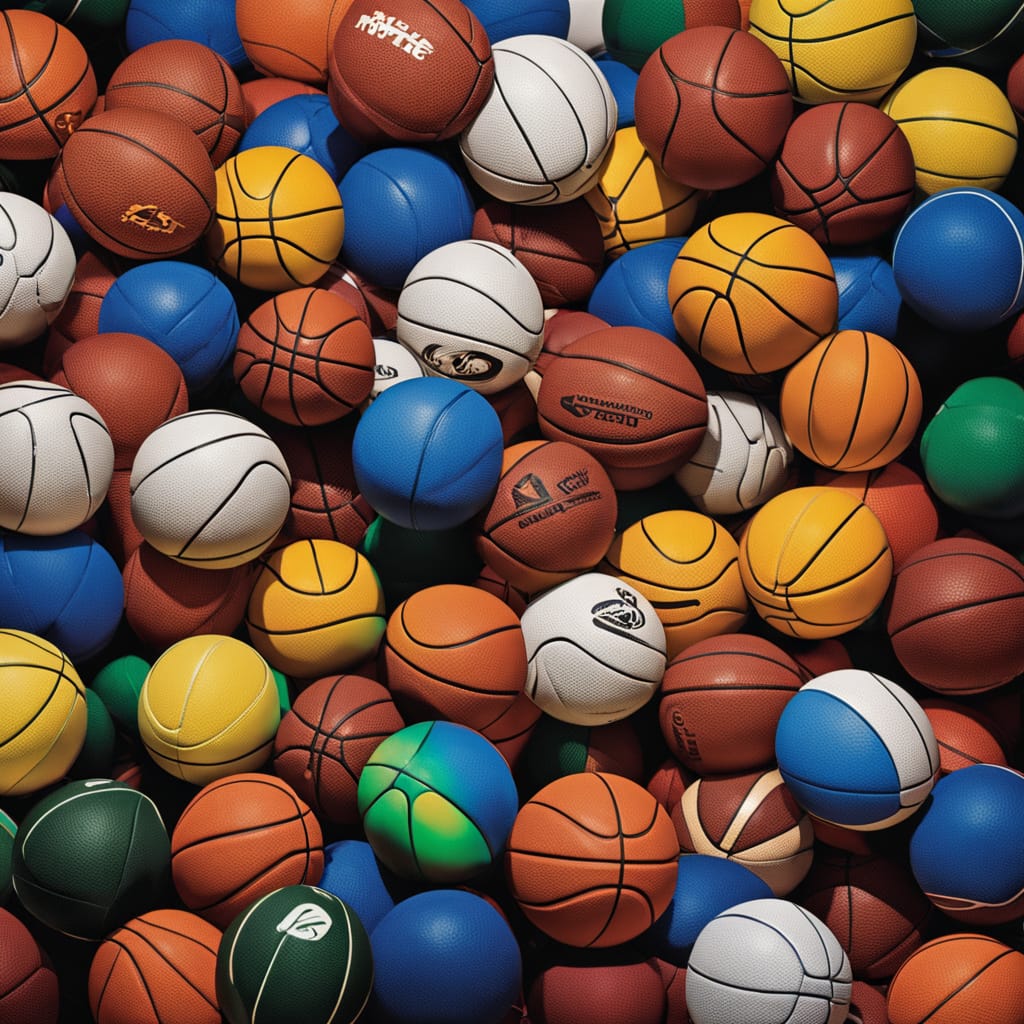PE in Schools
PE in Schools

Physical Education (PE) in schools has been a cornerstone of education systems worldwide for decades. Beyond mere physical activity, it serves as a platform for holistic development. This fosters not only physical health but also cognitive, emotional, and social well-being.
I am a proponent of continuing to have PE in our schools. It’s a fact that physical exercise is good for the body physically and mentally. I also believe that all kids who are physically able should have to participate. However, I don’t believe that their grade should be dictated by their athletic talent. In my opinion, they should be graded by their effort and attitude. I will elaborate on that a bit more later in this post.
I always enjoyed PE as a kid and actually looked forward to it. Being athletically inclined, it was relatively easy for me to pick up on most new sports and exercises. I was also raised in a competitive family environment, so competing and wanting to win came naturally.
There was one particular skill in PE that I was awful at and I can honestly say that I hated. Climbing a rope. The thought of those embarrassing and failed attempts to climb that stupid rope still gives me shivers today. I suppose the most intimidating aspect of it was my ferocious fear of heights. Thank goodness I have since conquered that fear. I have repelled from a 300 foot cliff and flown in an airplane several times.
Historical Perspectives: The Evolution of PE in Schools
The roots of physical education can be traced back to ancient civilizations, where physical prowess was valued alongside intellectual pursuits. Ancient Greece, for example, emphasized physical fitness through activities such as wrestling, running, and gymnastics. Many of these activities became part of the Olympic Games. Similarly, ancient China integrated martial arts and calisthenics into their educational systems to promote both health and discipline.
During the 19th century, the Industrial Revolution prompted concerns about the physical health of the population. This led to the establishment of organized physical education programs in schools. Figures like Friedrich Jahn in Germany and Dudley Allen Sargent in the United States advocated for structured physical training. They felt it very important to counteract the sedentary lifestyles associated with urbanization.
In the early 20th century, PE became a formal component of school curricula in many countries. This was greatly influenced by the belief that physical fitness was essential for national defense and productivity. The two World Wars further underscored the importance of physical fitness. Several governments implemented PE programs to ensure the readiness of their populations.
Evolution of PE: From Traditional Activities to Holistic Wellness
Over the years, the landscape of PE has evolved significantly. It has transcended traditional notions of physical training to embrace a more holistic approach to wellness. Traditional activities like team sports and calisthenics remain an important and integral paret of PE. PE can now include diverse activities such as yoga, dance, and other outdoor pursuits. This approach caters to a broader spectrum of interests and abilities.
Moreover, there’s been a shift towards emphasizing lifelong fitness and health promotion. This equips students with the knowledge and skills to maintain active lifestyles beyond the school setting. Concepts like physical literacy, which encompasses movement competence, confidence, and motivation, have gained popularity. This highlights the importance of developing foundational movement skills from an early age.
Pros of PE in Schools
- Physical Health – PE promotes physical fitness, helping students develop strength, endurance, flexibility, and cardiovascular health. Regular physical activity reduces the risk of obesity, heart disease, diabetes, and other chronic conditions.
- Mental Health – Physical activity is closely linked to mental health. PE can provide opportunities for stress relief, mood enhancement, and improved cognitive function. Regular exercise has been shown to reduce symptoms of anxiety, depression, and ADHD, enhancing overall emotional well-being.
- Social Skills – PE fosters teamwork, communication, and cooperation, as students engage in collaborative activities and team sports. It promotes empathy, sportsmanship, and conflict resolution, contributing to the development of positive interpersonal relationships.
- Academic Performance – Research suggests a positive correlation between physical activity and academic achievement. Regular exercise enhances cognitive function, attention, and memory. PE breaks stimulate brain activity, improving concentration and academic engagement.
- Lifelong Habits – PE can instill a love for physical activity and teach essential fitness skills. It also equips students with the tools to lead active, healthy lifestyles beyond their school years. This cultivates habits of self-discipline, goal-setting, and resilience, essential for success in various domains of life.
Cons of PE in Schools
- Time Constraints – With increasing academic demands and standardized testing requirements, schools may prioritize academic subjects over PE. This can lead to reduced class time or even the elimination of PE programs. Limited resources and scheduling conflicts further exacerbate this issue, compromising students’ access to physical activity.
- Inadequate Facilities and Resources – Many schools lack adequate facilities, equipment, and qualified instructors for PE. This limits the quality and effectiveness of the programs. Budget constraints often result in outdated or unsafe equipment, hindering students’ engagement and enjoyment of physical activities.
- Lack of Individualization – PE curricula may not cater to the diverse needs, interests, and abilities of students. This can cause feelings of exclusion or inadequacy among non-athletic children. Emphasis on competitive sports and performance-based assessments can alienate students who do not excel in traditional athletic pursuits.
- Gender Disparities: Traditional notions of masculinity and femininity may influence PE activities and expectations, perpetuating gender stereotypes and inequalities. Girls may receive less encouragement and opportunities in sports and physical activities, impacting their self-esteem and participation levels.
- Risk of Injury – Participation in certain sports or activities carries inherent risks of injury. This can range from minor sprains to more serious conditions like concussions or fractures. Inadequate supervision, improper technique, or lack of safety protocols can increase the likelihood of accidents.
Grading Methodologies in PE: Striking a Balance
Grading PE presents unique challenges due to its subjective nature and diverse learning outcomes. Traditional grading systems often focus on performance in specific activities or skills. This fails to capture the holistic benefits of PE or accommodate individual differences. Alternative approaches, such as standards-based grading or portfolio assessment, emphasize mastery of essential skills and personal growth. This provides a more comprehensive evaluation of students’ progress.
Ideally, grading in PE should reflect a balance between performance-based assessments and broader indicators of physical literacy, health, and well-being. This type of grading that assesses both skill acquisition and effort can provide a more equitable and inclusive assessment framework. It acknowledges students’ individual progress and contributions regardless of their athletic abilities.
I have seen first-hand how grading solely upon athletic ability is wrong. When a young person is an excellent student getting straight A’s and their PE grade can potentially stand in the way of them being valedictorian, there is a problem. Don’t get me wrong. If said student isn’t giving 110% effort, participating whole-heartedly, and coming to class with a great attitude, that’s a horse of a different color.
However, the situation that I witnessed was a student who weighed 90 pounds soaking wet. She was potentially going to get a poor grade due to not having the strength to pull the string of an archery bow back. I’ll add that this young person’s attitude was awesome and they were actually very athletically coordinated. The story ended well, but this unfortunately is not always the case. If you show up for class with a good attitude and give 100% effort, you should get an A. Period.
Impact on Non-Athletic Children: Nurturing Inclusivity and Engagement
For non-athletic children, PE can be both a source of challenge and opportunity. Some traditional PE activities may not align with their interests or strengths. Inclusive and adaptive approaches can help them discover enjoyable forms of physical activity and develop confidence in their abilities. Teachers should encourage non-athletic children to explore a variety of activities. They should also emphasize participation, effort, and personal improvement rather than competitive performance.
Moreover, fostering a supportive and inclusive classroom culture can mitigate feelings of self-consciousness or inadequacy. This will promote a positive attitude towards physical activity and overall well-being. Activities that emphasize teamwork and mutual support can create a sense of belonging and acceptance among all students.
Conclusion
Physical Education remains a vital component of school curricula. It offers numerous benefits for students’ physical, mental, and social development. While the landscape of PE continues to evolve, it is essential to prioritize inclusive and holistic options. These options should cater to the diverse needs and abilities of all students. When they embrace innovative teaching methodologies, schools can maximize the potential of PE to empower students and foster holistic well-being.






